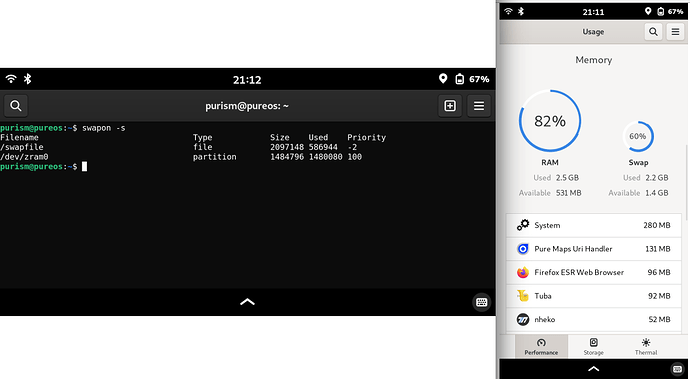Last night I was using my L5 as I normally do and just for the fun of it I checked memory usage.
I wasn’t doing anything special. I was just catching up on Mastodon reading using Tuba and surfing the web. There were several other open apps but I wasn’t trying to use a lot of ram. Just doing what I do. So it seems this trick does have benefits for my use case.
